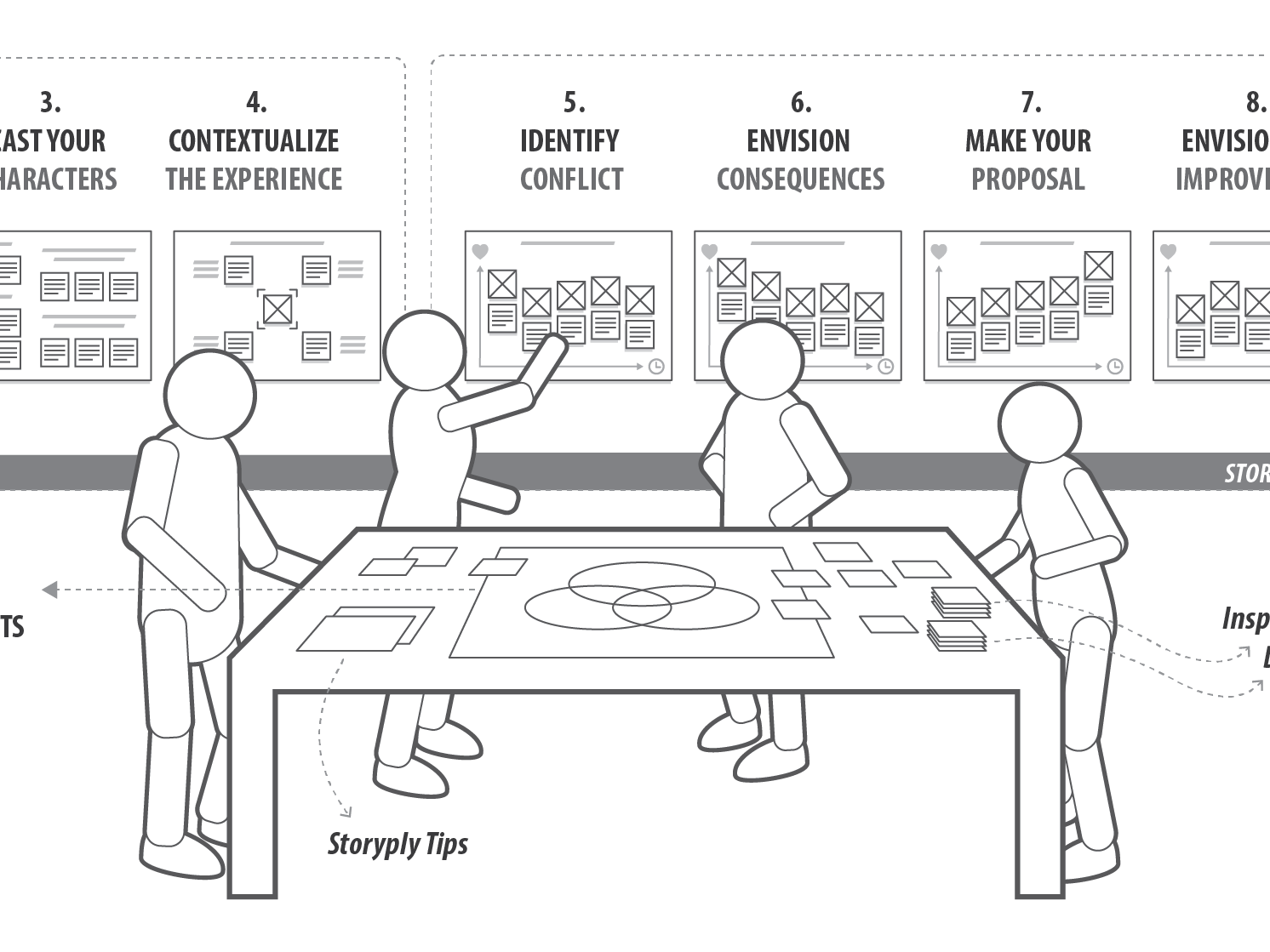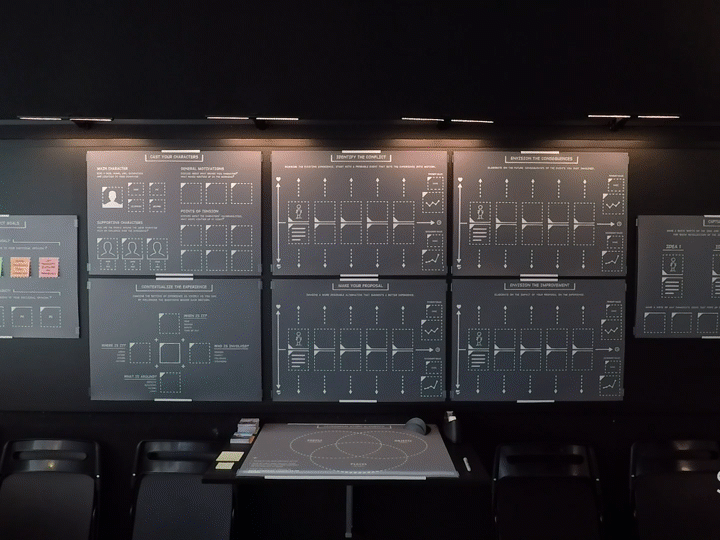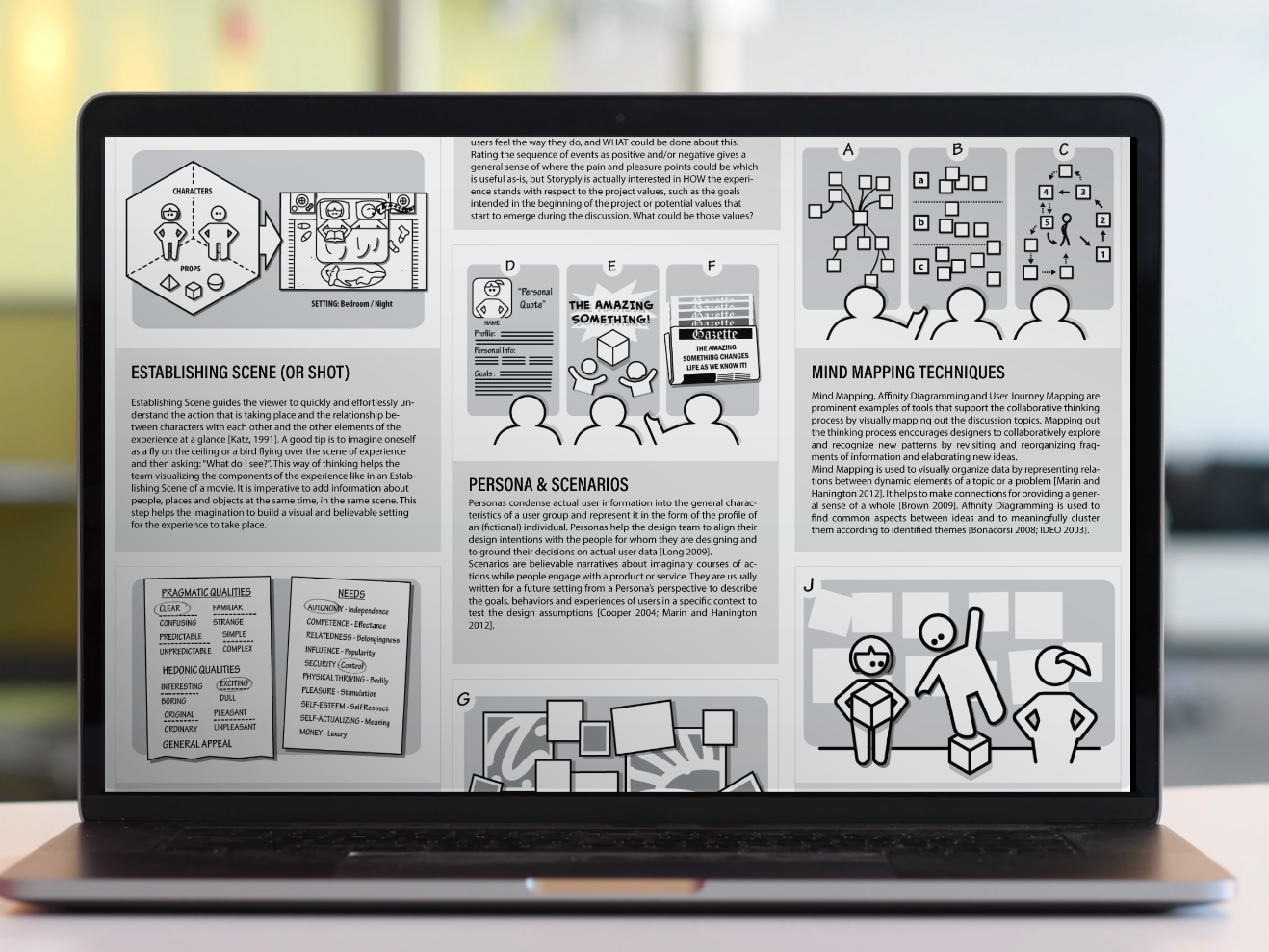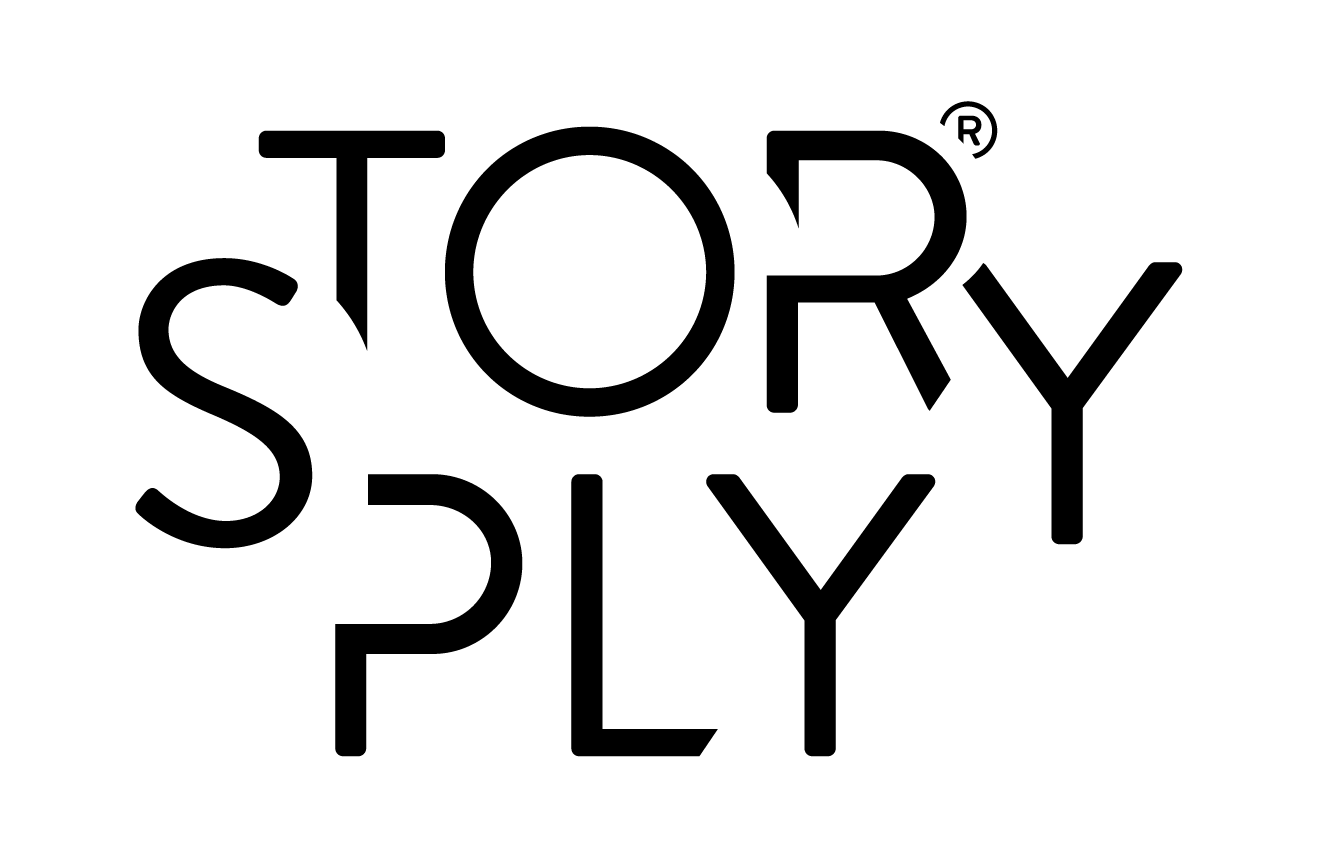
Summary
In this thesis, we explore the idea of incorporating storycraft in the conceptual design stage to support the project team's efforts in designing for experiences and services.
1st Promoter: Jean-Bernard Martens
2nd Promoter: Caroline Hummels

Videos
We started sketching an interface to collect user insights and information to feed into a body of knowledge that would help us to answer research questions and validate claims. The interface naturally grew into a framework that produced a physical toolkit. In its current form, Storyply combines ‘conceptual design’ and ‘story planning techniques’ to help the design team to discuss and visualize solutions for themselves and the potential audience of the project, such as users, clients, and other stakeholders.

Publications
2020 - Conference Paper - Springer
Applying Storycraft To Facilitate an Experience-Centric Conceptual Design Process - (Accepted for HCII2020)
2016 - Book Chapter - Springer
STORYPLY: Designing for User Experiences using Storycraft
2011- Article - ACM Publishing
Crafting user experiences by incorporating dramaturgical techniques of storytelling
2010 - Conference Paper - ACM
STORIFY: a tool to assist design teams in envisioning and discussing user experience.

Templates
Storyply® provides a set of templates to guide designers through the method by visually organizing their efforts and creative output. There are nine templates in total. Storyply® Method suggests two main layers: Story & Review. In Backstory section, participants work to identify and utilize vital information about the background of the project, target user(s), and the context of use while envisioning the experience in general terms. In Backstory section, participants generate and assess the content and create alternative approaches that can lead to propositions for improved experiences.
